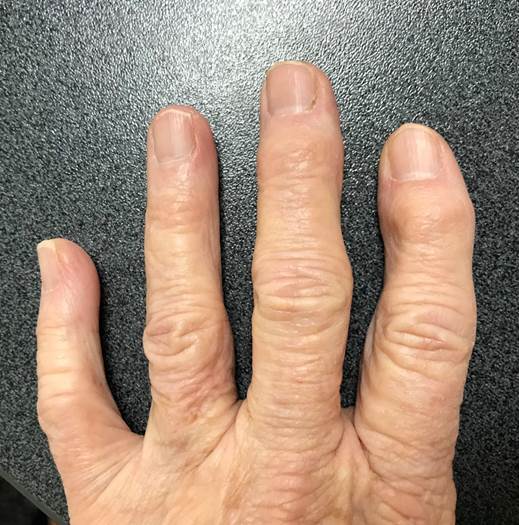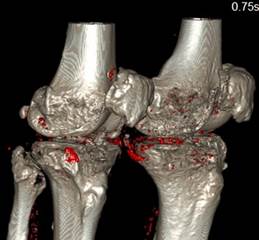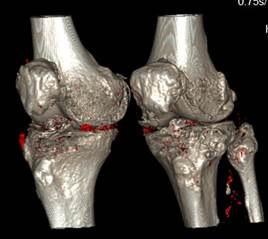Osteoarthritis
The information contained in this section is meant to provide you with insights, information and tips to make living with arthritis a bit more manageable.
Click on the links below to take you to the particular section.
- What is arthritis?
- What are the different types of arthritis?
- What causes osteoarthritis?
- Predisposing factors to osteoarthritis of knee
- What are the symptoms of osteoarthritis?
- How do we diagnose osteoarthritis?
- What you can do?
- What can we do for you?
- Treatment options
- Does exercise really help?
- Can special diets treat arthritis?
- Summary
Arthritis is a general term covering more than 100 different conditions.
The term arthritis literally means inflammation of a joint, but is generally used to describe any condition in which there is damage to the articular cartilage. Articular cartilage is very specialised slippery white tissue that covers the ends of the bones at the joints. It is required for near frictionless movement and shock absorption which are essential properties of synovial joints.
Osteoarthritis is the most common form of arthritis. It is simply a wear and ageing process that affects the articular cartilage. Severe cartilage wear can result in painful bone on bone contact at the joint. This process may cause a reactive inflammation known as synovitis. The pain in osteoarthritis is both mechanical from the overloaded bone (bone is full of nerve endings) and inflammatory from the reactive synovitis.
What are the different types of arthritis?
There are over 100 different types of arthritis. The most common are:
Osteoarthritis
Also called degenerative joint disease, this is the most common type of arthritis, which occurs most often in older people. This process affects cartilage, the tissue that cushions and protects the ends of bones in a joint. With osteoarthritis, the cartilage starts to wear away over time. In extreme cases, the cartilage can completely wear away, leaving nothing to protect the bones in a joint, causing bone-on-bone contact. The bones may expand and form osteophytes (bony spurs) around the edges of the joint. In time the joint may deform, causing stiffness and angulation in the limb.
Osteoarthritis causes joint pain and can limit a person’s normal range of motion (the ability to freely move and bend a joint). When severe, the joint may lose all movement, causing a person to become disabled. Mobility can be severely affected by hip, knee and ankle arthritis.
Rheumatoid arthritis
This is an autoimmune disease in which the body’s immune system attacks healthy joints, tissues, and organs. This disease inflames the lining (or synovium) of joints. It can cause pain, stiffness, swelling, and loss of function in joints. When severe, rheumatoid arthritis can deform, or change, a joint. For example, the joints in a person’s finger can become deformed, causing the finger to bend or curve.
Rheumatoid arthritis affects mostly joints of the hands and feet and tends to be symmetrical. This means the disease affects the same joints on both sides of the body (like both hands or both feet) at the same time and with the same symptoms. No other form of arthritis is symmetrical. About two to three times as many women as men have this disease.
Fibromyalgia
This chronic disorder causes pain throughout the tissues that support and move the bones and joints. Pain, stiffness, and localized tender points occur in the muscles and tendons, particularly those of the neck, spine, shoulders, and hips. Fatigue and sleep disturbances may also occur.
Gout
Gout is a metabolic condition that leads to abnormally high levels of uric acid in the blood. The body makes uric acid from many of the foods we eat. Too much uric acid causes deposits, called uric acid crystals, to form in the fluid and lining of the joints. The result is an extremely painful attack of arthritis. The most common joint gout affects is the big toe. This disease is more common in men than in women.
Infectious arthritis
Arthritis can be caused by an infection, either bacterial or viral, such as Lyme disease. When this disease is caused by bacteria, early treatment with antibiotics can ease symptoms and cure the disease.
Reactive arthritis
This is arthritis that develops after a person has an infection in the urinary tract, bowel, chest or elsewhere in the body. Reactive arthritis may also be associated with eye problems, skin rashes, and mouth ulcers.
Psoriatic arthritis
Some people who have psoriasis, a common skin problem that causes scaling and rashes, also have arthritis. This disease often affects the joints at the ends of the fingers and can cause changes in the fingernails and toenails. The spine, hips and knees may also be affected.
Systemic lupus erythematosus
Also called lupus or SLE, this is an autoimmune disease. In this condition, the immune system attacks healthy cells and tissue, rather than doing its job to protect the body from disease and infection. Lupus can inflame and damage a person’s joints, skin, kidneys, lungs, blood vessels, heart, and brain. African American women are three times more likely to get lupus than Caucasian women. It is also more common in Hispanic, Asian, and American Indian women.
Ankylosing spondylitis
This disease most often affects the spine, causing pain and stiffness. It can also cause arthritis in the hips, shoulders, and knees. It affects mostly men in their late teenage and early adult years.
Juvenile rheumatoid arthritis
JRA is the most common type of arthritis in children, this disease causes pain, stiffness, swelling, and loss of function in the joints. A young person can also have rashes and fevers with this disease.
Polymyalgia rheumatica
Because this disease involves tendons, muscles, ligaments, and tissues around the joint, symptoms often include pain, aching, and morning stiffness in the shoulders, hips, neck, and lower back. It is sometimes the first sign of giant cell arteritis, a disease of the arteries characterized by inflammation, weakness, weight loss, and fever.
Polymyositis
Causing inflammation and weakness in the muscles, this disease can affect the whole body and cause disability.
Bursitis
This condition involves inflammation of the bursa, small, fluid-filled sacs that help reduce friction between bones and other moving structures in the joints. The inflammation may result from arthritis in the joint or injury or infection of the bursa. Bursitis produces pain and tenderness and may limit the movement of nearby joints.
Tendonitis
Inflammation of tendons (tough cords of tissue that connect muscle to bone) may be caused by overuse, injury, or a rheumatic condition. Tendonitis produces pain and tenderness and may restrict movement of nearby joints. The most common sites are the knee (patellar tendonitis), ankle (Achilles’ tendonitis), and the elbow (lateral epicondylitis or tennis elbow).
Osteoarthritis is caused by the wearing out of the cartilage covering the bone ends in a joint. This may be due to excessive strain over prolonged periods of time, or due to other joint diseases, injury or deformity.
Primary osteoarthritis is commonly associated with ageing and general degeneration of joints.
The picture below shows heberden’s nodes involving the index finger. Heberden’s nodes are bony swellingsof the joint closest to the finger tip, also known as DIP joint or distal interphalangeal joint, which is the joint just below the finger nail. Heberden’s nodes are a sign of genetic predisposition to osteoarthristis. They are named after William Heberden(1970-1801).

Secondary osteoarthritis is generally the consequence of another disease or condition, such as repeated trauma to the affected joint, or abnormal joint structures from birth.
Uric acid crystal build-up is the cause of gout and long-term crystal build-up in the joints may cause secondary osteoarthritis and deformity.
Some people may have congenital and developmental abnormalities of the joints-for example, Perthes’ disease of the hips-that causes early degeneration and subsequent osteoarthritis.
Predisposing factors to osteoarthritis of knee
Abnormalities of knee joint function resulting from fractures of the knee, torn cartilage, torn menisci and torn ligaments can lead to degeneration many years after the injury. The mechanical abnormality leads to excessive wear and tear and eventually, osteoarthritis.
What are the symptoms of osteoarthritis?
- Pain
- Tenderness
- Swelling
- Heat
- Limitation of motion
- Early morning stiffness
The main symptoms of osteoarthritis are pain, stiffness and loss of function. Pain tends to increase with activity.
Joint inflammation may also cause warmth, redness and swelling.
Inflammatory arthritis may cause early morning stiffness and skin rashes.
How is osteoarthritis diagnosed?
Osteoarthritis is diagnosed by the medical history, physical examination of the joint, and with X-Rays and MRI scans.
Inflammatory arthritis may also require blood tests and occasionally, tissue biopsy.
- Rest the joint until the pain subsides to prevent further inflammation
- To ease the pain or stiffness of the joint, apply heat on the joint for about 15 minutes once or twice a day using a hot water bottle, towel or an infrared lamp
- Take painkillers or anti-inflammatories, as recommended by your doctor
- If you are overweight, try to reduce weight to lighten the load on weight-bearing joints
- Participate in regular, low impact exercise
There is no cure for arthritis, so beware of ‘miracle cures’. Your doctor may prescribe anti-inflammatory medicine. They may recommend physical therapy, which includes exercises and heat treatment. In severe cases, surgery may be suggested, such as a hip or knee replacement. The type of surgery will depend on your age and severity of the disease. In the case of severe arthritis of the hip or knee, joint replacement is usually very successful.
- Initial treatment for osteoarthritis of the knee is conservative, consisting of rest, avoidance of vigorous weight bearing activities, and the use of non-narcotic analgesic and or anti inflammatory medications. With worsening symptoms a cane or a knee brace may be helpful
- For more severe symptoms, an injection of cortisone or a lubricating fluid (Hyaluronic acid or HA) into the joint can be quite helpful. When conservative measures have been exhausted and are no longer helpful, and the arthritis has become disabling, surgery may be recommended
Treatment of osteoarthritis focuses on decreasing pain and improving joint movement, and may include:
- Exercises to keep joints flexible and improve muscle strength
- Medications to control pain, e.g. paracetamol
- Anti-inflammatories (NSAID’s), and Cox 2 inhibitors, e.g. meloxicam (Mobic)
- Injections of cortisone or Hyaluronic acid into the joint
- Heat therapy
- Knee brace
- Weight control to reduce the stress on the joint
- Surgery: partial or total knee replacement
Does exercise really help those who have osteoarthritis?
Exercise is very important because it increases lubrication of the joints and strengthens the surrounding muscles, putting less stress on joints. Exercise in heated swimming pools-hydrotherapy-can bring enormous relief from pain and stiffness. Studies have shown that exercise helps people with arthritis by reducing joint pain and stiffness and increasing flexibility, muscle strength and energy. It also helps with weight reduction and offers an improved sense of well-being.
Can special diets treat osteoarthritis?
This is a commonly asked question.
The American Academy of Orthopedic Surgeons 2013 Treatment of Osteo Arthritis of the knee : Evidence based guideline 2nd Edition is an important resource .
See weblinks to summary and full article
- https://www.aaos.org/research/guidelines/oaksummaryofrecommendations.pdf
- https://www.aaos.org/research/guidelines/TreatmentofOsteoarthritisoftheKneeGuideline.pdf
Recommendation 6 states
“We cannot recommend using glucosamine and chondroitin for patients with symptomatic osteoarthritis of the knee.
Strength of Recommendation: Strong”
Obesity (being significantly overweight) Your weight is the single most important link between diet and arthritis, as being overweight puts an additional burden on your hips, knees, ankles and feet
Most of what you need to know about diet and nutrition is common sense; healthy eating is pretty much the same for anyone, whether you have arthritis or not. But there are exceptions.
There is no cure for osteoarthritis. Patients are advised to adjust their activity level and lifestyle to reduce the load on the affected joints. When conservative treatments are no longer working, knee replacement is usually very effective with pleasingly high patient satisfaction rates.





